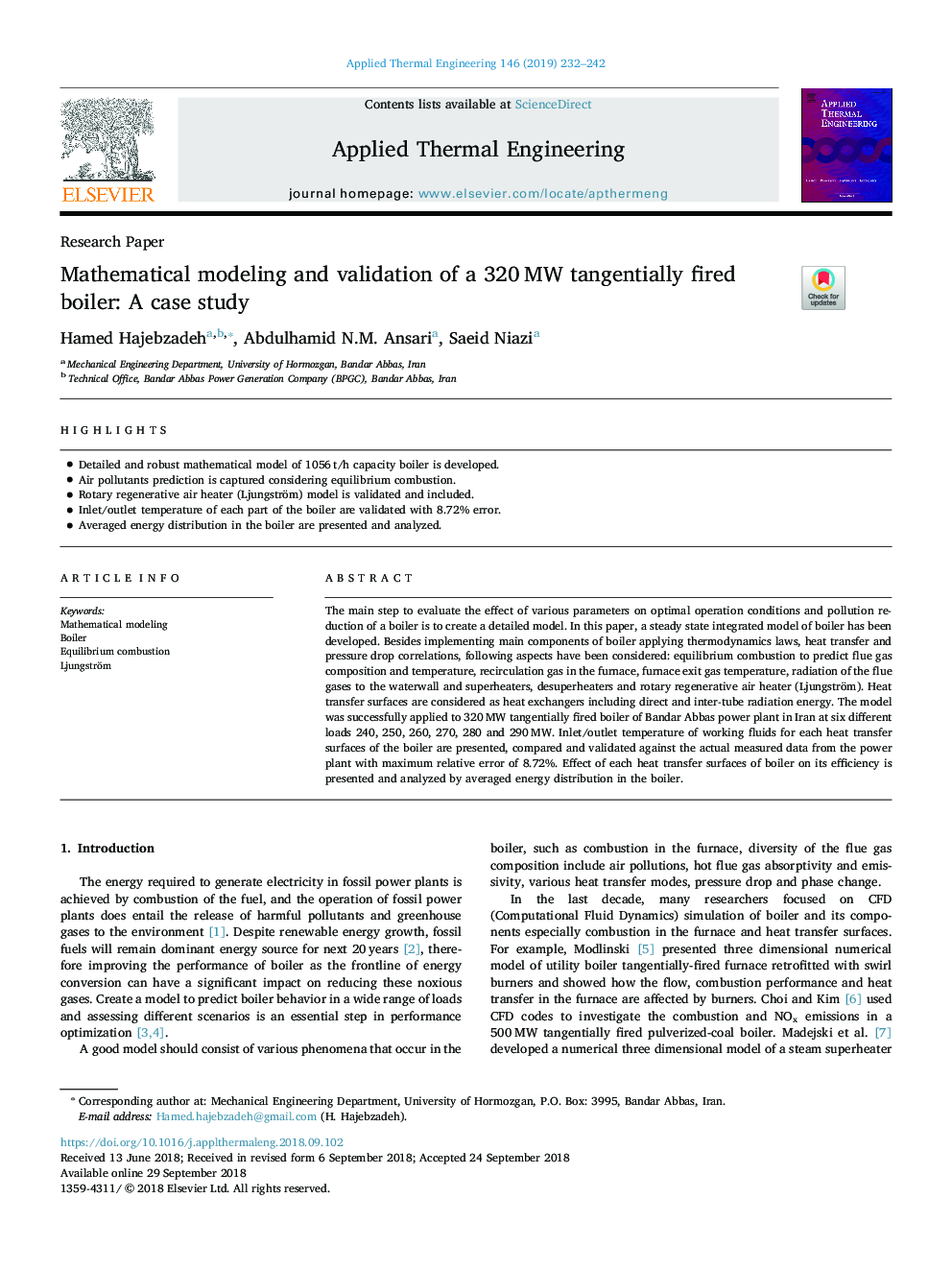| Article ID | Journal | Published Year | Pages | File Type |
|---|---|---|---|---|
| 11020817 | Applied Thermal Engineering | 2019 | 11 Pages |
Abstract
The main step to evaluate the effect of various parameters on optimal operation conditions and pollution reduction of a boiler is to create a detailed model. In this paper, a steady state integrated model of boiler has been developed. Besides implementing main components of boiler applying thermodynamics laws, heat transfer and pressure drop correlations, following aspects have been considered: equilibrium combustion to predict flue gas composition and temperature, recirculation gas in the furnace, furnace exit gas temperature, radiation of the flue gases to the waterwall and superheaters, desuperheaters and rotary regenerative air heater (Ljungström). Heat transfer surfaces are considered as heat exchangers including direct and inter-tube radiation energy. The model was successfully applied to 320â¯MW tangentially fired boiler of Bandar Abbas power plant in Iran at six different loads 240, 250, 260, 270, 280 and 290â¯MW. Inlet/outlet temperature of working fluids for each heat transfer surfaces of the boiler are presented, compared and validated against the actual measured data from the power plant with maximum relative error of 8.72%. Effect of each heat transfer surfaces of boiler on its efficiency is presented and analyzed by averaged energy distribution in the boiler.
Keywords
Related Topics
Physical Sciences and Engineering
Chemical Engineering
Fluid Flow and Transfer Processes
Authors
Hamed Hajebzadeh, Abdulhamid N.M. Ansari, Saeid Niazi,
